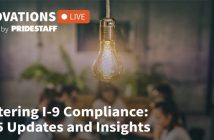(Graphic courtesy of Vistage Int’l 667)
Artificial Intelligence (AI) is no longer a distant concept — it’s here, actively transforming industries, automating tasks, and enhancing decision-making. Our local Vistage Peer Group recently had the privilege of hosting Severin Sorensen, author of The AI Whisperer: Handbook for Leveraging Conversational Artificial Intelligence and ChatGPT for Business, for an insightful discussion on how AI is transforming the business world.
His expertise provided valuable insights into how AI can enhance decision-making, streamline operations, and create new growth opportunities.
The question is no longer if AI will impact your business — it already is. The real question is: How quickly will you take advantage of it?
You don’t need to be a tech expert, have a massive budget, or completely restructure your business to start using AI effectively. However, you do need a plan. To help you integrate AI into your business strategically and effectively, here are five practical steps to get started.
Step 1:
Establish an AI Use Policy with Clear Boundaries
Before introducing AI into your company, it’s essential to set clear guidelines on how it should be used. AI is a powerful tool, but without proper guardrails, it can lead to security risks, ethical dilemmas, or operational inefficiencies. A well-crafted AI use policy ensures that AI enhances productivity while maintaining security and compliance. Think of this policy as a roadmap for AI adoption. It allows your team the freedom to innovate while ensuring AI usage remains aligned with your business objectives and security standards.
Step 2:
Identify High-Impact Use Cases
AI is not a one-size-fits-all solution. Instead of trying to integrate AI across every aspect of your business, start small by identifying the areas where AI can deliver the most value. Key areas where AI excels:
- Automating repetitive tasks — AI can handle data entry, customer inquiries, and report generation, freeing up your team for more strategic work.
- Enhancing data analysis — AI processes vast amounts of information, helping businesses uncover insights, predict trends, and optimize decision-making.
- Personalization at scale — AI improves customer experiences, automates marketing campaigns, and delivers data-driven recommendations.
Start by testing AI in one or two key areas, evaluate its impact, and then expand usage as your team gains confidence.
Step 3:
Train Your Team to Use AI Effectively
Investing in AI tools is meaningless if your team doesn’t know how to use them properly. Training is crucial to ensure AI becomes an asset, not just another piece of unused software. Here’s how to get your team AI-ready:
- Understand AI’s strengths and weaknesses — Employees must recognize AI’s capabilities and limitations to avoid over-reliance on automated responses.
- Develop AI prompt engineering skills — Since AI generates results based on input, training employees to ask clear, precise questions will improve AI-generated outputs.
- Encourage daily AI use — AI should become part of your team’s workflow. Create a knowledge-sharing space where employees can discuss AI applications and best practices.
As employees grow comfortable using AI, they’ll discover new ways to leverage its capabilities — making it even more effective for your business.
Step 4:
Automate Routine Processes to Save Time and Resources
AI’s biggest strength is its ability to automate repetitive, time-consuming tasks — freeing up employees to focus on high-value work. How to identify automation opportunities:
- Look for time-intensive, error-prone tasks — AI can automate things like invoice processing, appointment scheduling, and customer support responses.
- Prioritize scalable automation — AI works best when applied to repeatable workflows across multiple departments.
- Calculate ROI before automating — Focus on AI-driven automation projects that reduce costs, improve efficiency, and enhance customer satisfaction.
Beyond improving productivity, AI-powered automation enhances customer experiences — providing faster, more personalized interactions.
Step 5:
Optimize Your Data for AI Integration
AI thrives on high-quality data. Without well-structured data, AI’s performance can become inconsistent or unreliable. How to get your data AI-ready:
- Document internal knowledge — Capture employee expertise and convert it into structured data that AI can learn from.
- Audit data access permissions — Ensure AI only has access to necessary data while protecting sensitive business information.
- Categorize data effectively:
- Regulatory data: Sensitive information requiring strict access controls (e.g., HIPAA-protected data).
- Proprietary data: Internal strategies and confidential business materials.
- Low-risk data: General reports and publicly available insights AI can freely process.
The cleaner and more structured your data, the better AI will perform.
Your AI Transformation Starts Now
Bringing AI into your business doesn’t require a massive overhaul – just smart, strategic steps. By establishing clear AI policies, identifying high-impact use cases, training your team, automating processes, and optimizing your data, you’ll be well-positioned to leverage AI effectively.
AI is already reshaping industries, and the companies that adopt it now will gain a major competitive edge. The key is to start small, test AI’s capabilities, and expand usage based on results. Over time, AI will become an indispensable tool — enhancing efficiency, decision-making, and business growth.
Want to Learn More About AI?
If you’d like to explore how AI can benefit your organization, consider joining our Vistage peer group of top performing business leaders as we learn together.
Michael Sipe is an executive coach, business consultant, and mergers and acquisitions advisor.
Michael-Sipe.com • Vistage.com • CrossPointeCapital.com • 10xGroups.com





